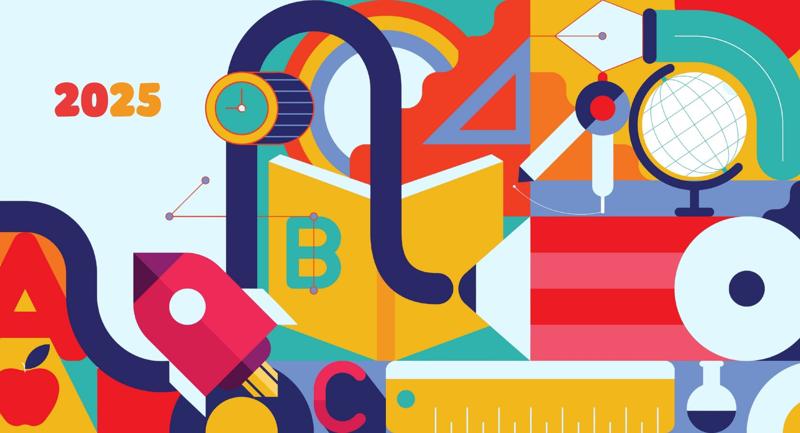I handed Principal Johnson a one-pager titled Monitor and Engage in Continuous Improvement as we sat down for our coaching visit. As her coach, I explained, "This document is a celebration of your hard work and dedication to fostering continuous improvement. This page includes a definition of continuous improvement, questions to consider, key actions, and alignment to the McRel evaluation instrument. Let’s use this page to review exactly what you did to improve student attendance so we can practice similar skills in other situations. Going forward, you can use this page to learn independently, reflect on their performance, and create plans for further improvement."
As Principal Johnson began to peruse the document, her eyes widened with delight, and a genuine smile graced her face as her eyes scanned a definition at the top of the page: "Use data to set goals and processes to plan, do, study, and act (celebrate or revise).” I asked her what caused her emotional reaction. “Plan, do, study, act? I’m doing all of the things on this one-pager already. The addition of the attendance team meeting we discussed a few weeks ago was huge because it systematized things and helped us narrow in on the most important data to review regularly.”
I nodded, feeling a surge of pride in our collaborative efforts. "Absolutely! Your commitment to data-driven decision-making and the strategies you've implemented have had a significant impact. Just think about the upward trend in attendance rates over the past few months."
As our coaching conversation continued, we highlighted (literally) under “Key Actions” what she did to improve attendance. Later, she used the questions that were listed on the same continuous improvement one-pager to plan her agenda for an upcoming PLC meeting with the 3rd-grade team.
Principal Johnson hung the one-pager on her office wall as we wrapped up the coaching session. "This one-pager will serve as a testament to the progress of your school community," I said. "We're on the right track and won't stop here." For Principal Johnson, this one-pager served as both a certificate of accomplishment and a learning tool.
Why a One-Pager?
Coaching is a collaborative and personalized professional development process where a trained coach acts as a facilitator, helping teachers and principals (coachees) achieve specific goals, improve performance, and enhance their overall well-being. Tools and processes like teacher and principal evaluations guide coaches on what they should be driving toward. However, the number of things to learn or practice can be overwhelming—one-pagers can help coaches identify appropriate priorities for development.
Coaches can summarize key ideas and strategies into a one-pager (using a design tool such as Canva) to synthesize expected behaviors for coachees. These concise, visually organized, and personalized documents are potent tools to enhance the coaching process. Creating a one-pager helps clarify precisely what the coach or supervisor expects, which, in turn, can help communication run smoothly, authentically, and clearly. One-pagers can also spotlight relevant work of others, such as including photos or other artifacts from classrooms.
A one-pager clarifies precisely what the coach or supervisor expects, which, in turn, helps communication run smoothly, authentically, and clearly.
Effectively using one-pagers can lead to improved communication, better retention of information, and increased motivation for both the coach and the coachee. Here are some reasons why one-pagers are an effective coaching tool:
1. Improved Communication: One-pagers provide clear instructions on specific techniques or expectations. A concise one-pager for a teacher might outline effective techniques for handling disruptive student behavior, for example. At the principal level, a coach can leverage a one-pager to define more complex processes or competencies that provide principals with more clarity about their supervisor’s expectations of them.
2. Goal Tracking and Documentation: Using a one-pager, the coach can set specific goals for the teacher’s or principal’s growth. The one-pager may include objectives, timelines, and success criteria for reaching a goal. As coaching sessions progress, the coach and coachee can update and track progress on the same one-pager, making it a living document that reflects the person’s development journey.
3. Personalization: A one-pager allows for personalization. Rather than relying on a one-size-fits-all approach that often occurs during group professional learning, leveraging one-pagers enables the coach and coachee to select appropriate priorities given school or district goals. Similar to select the right tool for the right job, the team can analyze current reality through data and observation. Once they have landed on a proper focus, the one-pager can serve as an individualized professional learning session that maximizes the coachee’s time and learning style.
One-Pager Methods
One-pager methods are various techniques to summarize information, set up practice, or support a coachee’s progress. One-pagers serve diverse purposes and can be used in different ways, depending on the specific requirements of each coachee’s situation. Here are some common one-pager methods:
Getting Clarity on Critical Practices
The first step to using one-pagers in coaching is clarifying the critical practices the coach hopes the coachee will practice or demonstrate. Then, coaches can use a variety of methods, which will vary by context or coachee need, to leverage that one-pager in a coaching conversation. In our coaching conversation, Principal Johnson used the one-pager to reflect on her leadership moves to improve attendance. Moving forward, she had the language to highlight what worked for her leadership so she could better replicate her practices in the future. Most importantly, the one-pager fostered continued growth for the principal that positively impacted student learning.
Leveraging one-pagers in coaching offers a dynamic and personalized approach to guide educators toward their professional goals. Coaches can harness the power of these concise documents to celebrate achievements, introduce new competencies, narrow focus for actionable steps, expand skills across contexts, and ensure clear communication. Crafting one-pagers that are not just informative but also inspiring can extend beyond any single coaching session, as one-pagers serve as living records of progress and accomplishments.








